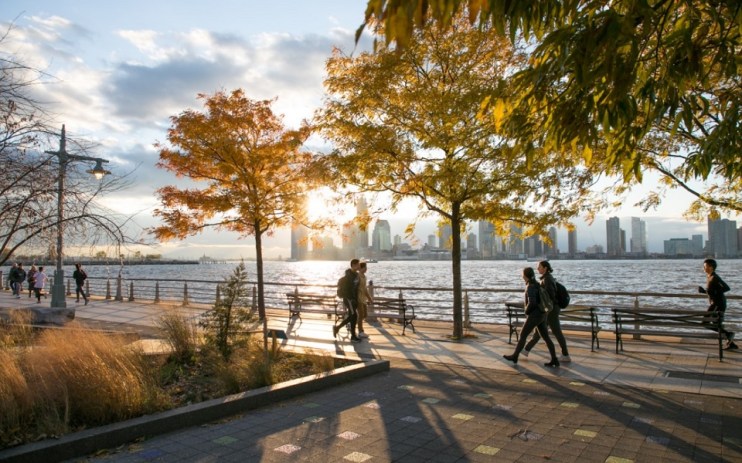Cycling New York’s wild, intriguing Hudson River cycling routes

The curls of smoke drifting from barbecues in New York’s Dominican district of Inwood, the pumping bars of Harlem and the chaos of Midtown, right down to the quieter serenity of Downtown.
Cycling through New York has never been easier, or more natural-feeling. The Hudson River Park that skirts along the west coast of Manhattan is ever-changing; new later this year is the Gansevoort Peninsula, which will offer Manhattan’s first beach. Since 1998 the pathways along the Hudson River have been developed to offer New Yorkers – and visitors – the opportunity connect with one part of the city to the next on two wheels.
I cycled from 214th Street in the upper Manhattan district of Inwood, famous from the Lin-Manuel Miranda movie In The Heights, all the way to Battery Park at the bottom of Manhattan, in around four hours. That allowed time for pit stops for food and drink and general sightseeing along the way.
Manhattan is an intense metropolis, and it is easy to understand why visitors see the city as a sprawling concrete jungle. But the city’s commitment to building biking superhighways that connect the whole of Manhattan island make the city’s districts feel more interconnected than ever before.
Like in London, there is the realisation in New York that nature matters. That to work hard in the business district, you need to be able to stop and enjoy peace and serenity once in a while
In Inwood, the Puerto Ricans gather along the Hudson River to light barbecues whenever it is someone’s birthday. On a weekend you might find dozens of groups gathering here, each 30 or 40-strong. Cycling through the riverside neighbourhood offers not only unrivalled views of the Hudson and the approaching Manhattan but a chance to understand the true cross-section of residents that make up upper Manhattan. I cycled past Inwood Hill Park and Fort Tyron Park, nature reserves where yachts on the Hudson River rub shoulders with sail boats. There are plentiful points to stop and admire a view of the boats from the cycle path, framed by thick, wild forest canopies. Could this really be New York?
Half an hour later in Harlem, the barbecues fade into pumping Latino bars. Notice the huge garbage recycling plant at the New Harlem Meer Center as you cycle along the river path, available the length of the city. Developed in the 1970s, the area now has sports centres and a swimming pool, part of an effort to make the district more pleasing to its inhabitants. Here, the architecture starts to feel more interesting and diverse as you cycle further into the more familiar districts of the city.
By the time you reach the streets around the 80s and 70s, you’re approaching Midtown, and the more developed piers, parks and recreational areas flash past as you sail along the cycle routes. By here, the money is apparent: privately chartered helicopters land on small snippets of land, but to get in on the action, Piers like the Pier 81 offer boat rides around Manhattan.
Gentrification is alive and well. The new developments around the Pier 76, Pier 45, Little Island and Pier 57 Rooftop Park boast nature trails, bars, restaurants and public spaces where concerts take place along the river to make New York’s Midtown a more appealing, and relaxing, place to be. Locals hang out on old jetties that used to be part of the industrial heartland. You can stop for a while at Piers 57 where the new Hudson Yards district meets the High Line to pop inland for a while and enjoy the attractions close to the shore.
Citi Bikes cost $19 Dollars for a whole day, as long as they’re docked every half an hour, and it isn’t long before you’re hitting Downtown, and the wider parklands around Battery Park at the bottom of the island where we stopped to watch the sun set between the skyscrapers on the opposite bank over on New Jersey opposite Manhattan.
Like in London, there is the realisation in New York that nature matters. That to work hard in the business district, you need to be able to stop and enjoy peace and serenity once in a while. You wouldn’t think it, but New York is also a wild, natural place. More is to come: in the coming months new Gansevoort Peninsula, Chelsea Waterside Park and Pier 57 districts will open. All the time the famous New York skyline teases in the background.
It’s best seen by bike on a gorgeously sunny afternoon, when you can cycle the whole thing and have change from a $20 Dollar bill in your pocket.
